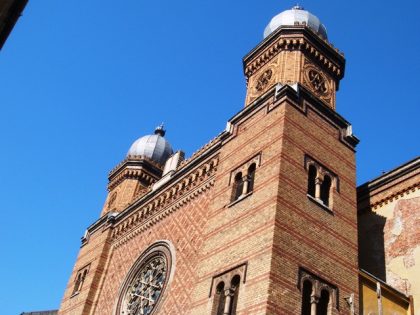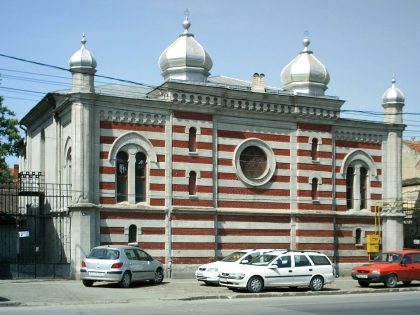
The first Jews probably settled in Timisoara in the 17th century. Gravestones were found in the city dating from that era. At the end of the conflict between the Austrians and the Turks, a Jewish Community life quickly developed. Both Sephardic and Ashkenazic.
Places of worship were created but also cultural establishments as well as schools. Facing regular waves of anti-Semitism, the results of the Holocaust as well as massive exiles, the Jews which numbered 13000 in 1947, are only a few dozens today.
Among the important figures of the religious life, Rabbi Erno Neumann ensured a continuous religious life after the war until his death in 2004.

In Timisoara, the Temple of the Citadel was modeled after the famous synagogue on Dohány Street in Budapest. It was consecrated in 1867 with Emperor Franz Josef in attendance. Like the two other synagogues still active in Timisoara, it rivals the Orthodox Christian cathedrals in beauty, bringing together Baroque, Byzantine, Gothic, and Moorish architectural elements.
The Fabric synagogue , built in a Neolog style which can be found used frequently in the construction of the country’s places of worship, was inaugurated by the town’s mayor in 1899. Hungarian architect Lipot Baumhorn built many synagogues in Eastern Europe, as well as other types of monuments in the city of Timisoara itself. A massive and original building, charged with a rich history, the synagogue is neverthell in a serious state of degradation.
The Iosefin synagogue carries the name of the neighborhood it was built in by the Orthodox community in 1895. The city also has a Jewish cemetery .